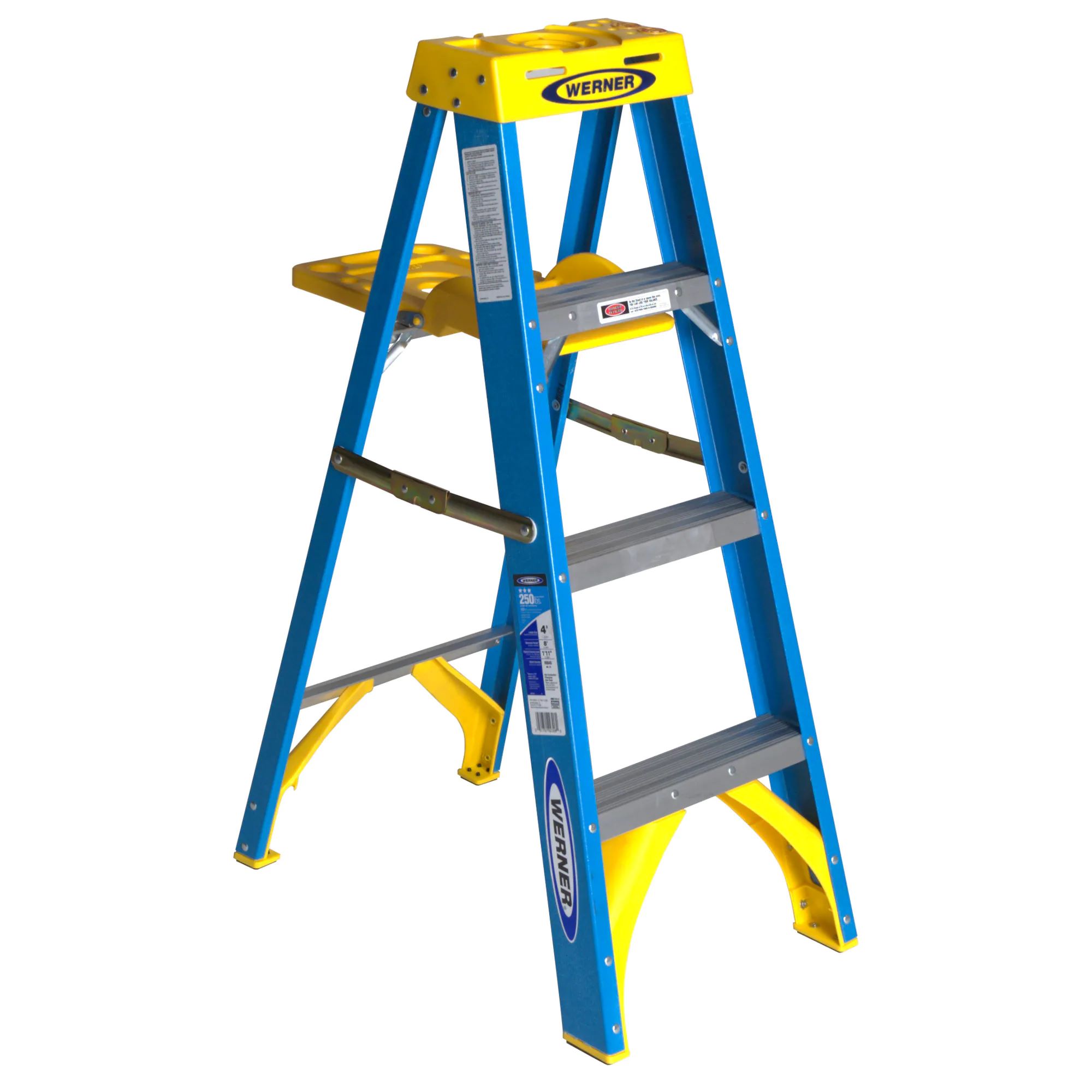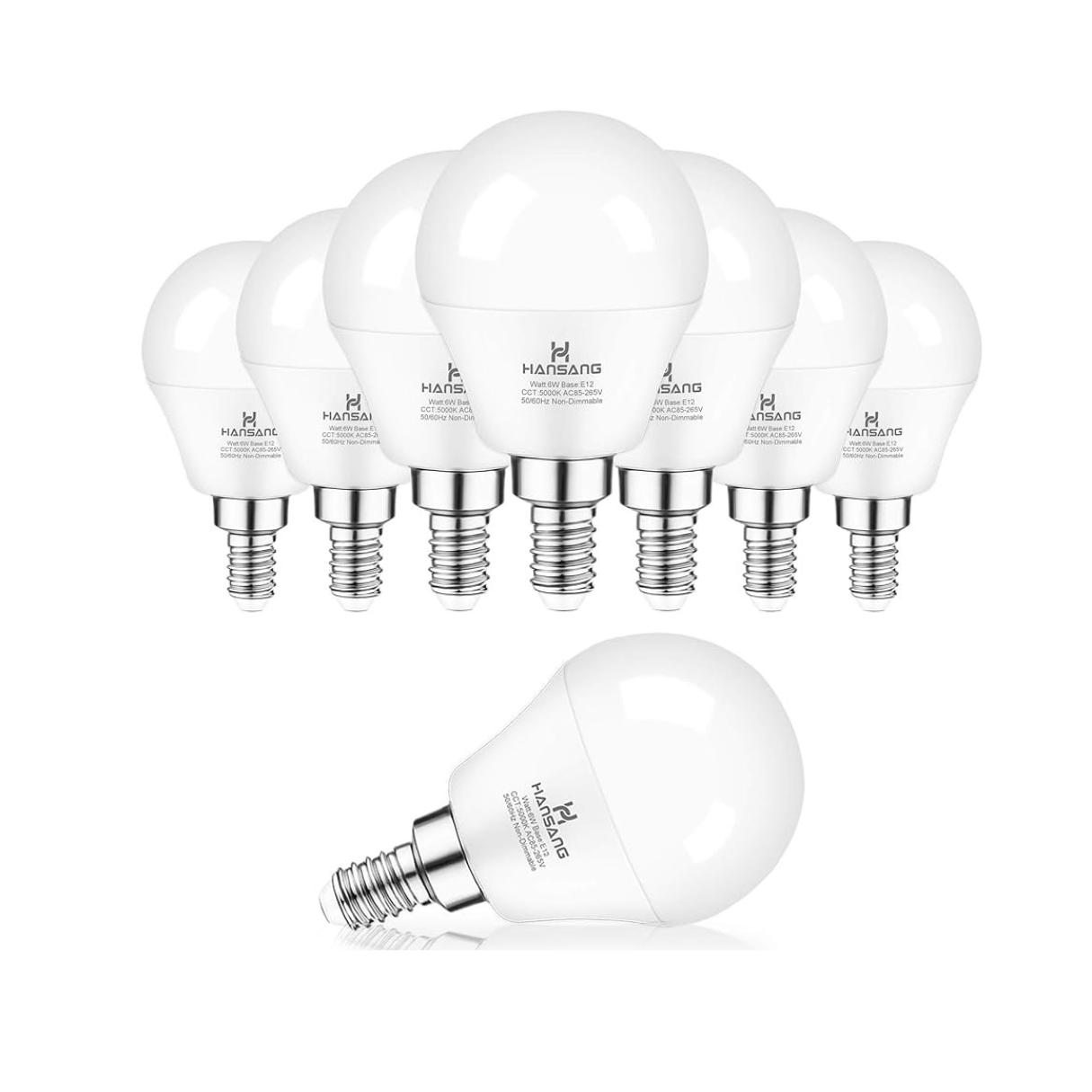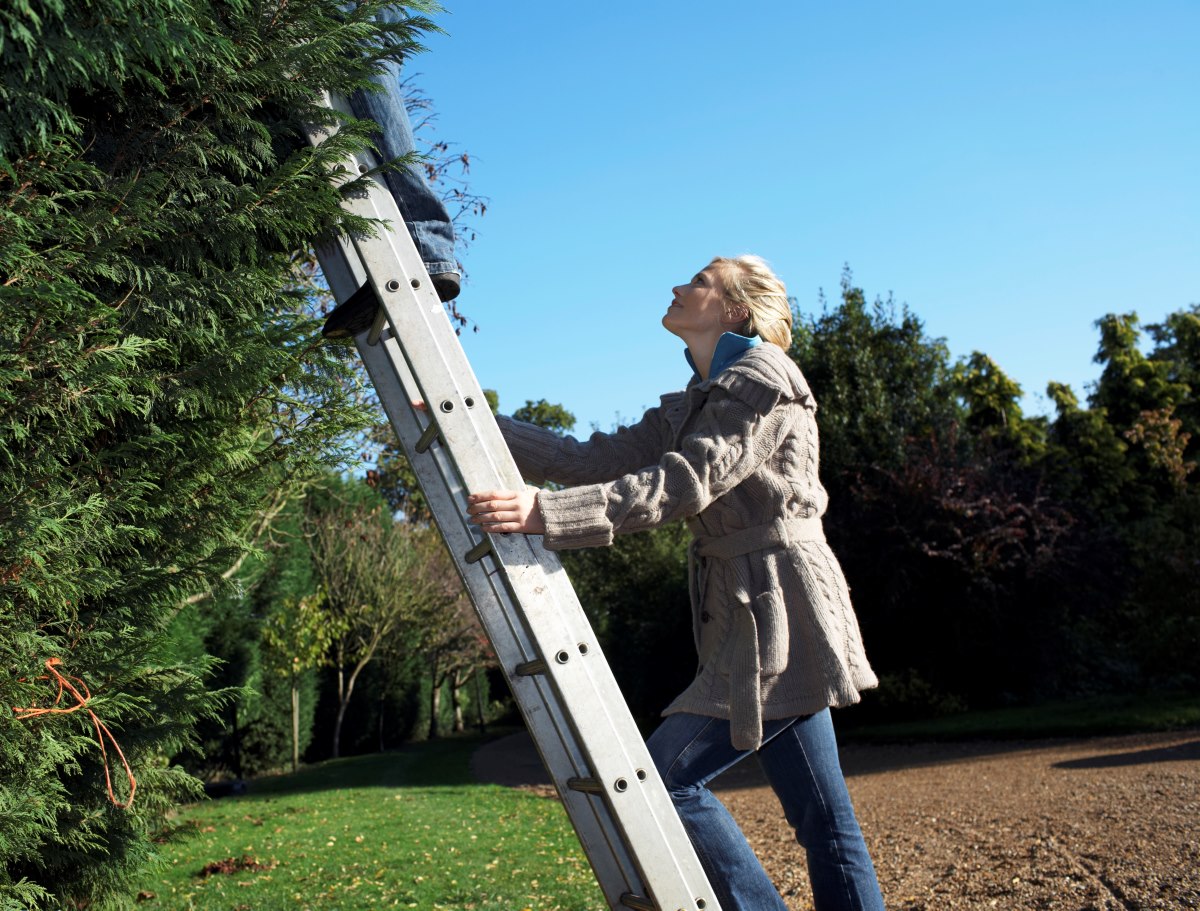

Articles
What Does Type 1 Ladder Mean
Modified: January 20, 2024
Discover the meaning of a type 1 ladder and how it is used in various articles. Find out its key features and benefits in our comprehensive guide.
(Many of the links in this article redirect to a specific reviewed product. Your purchase of these products through affiliate links helps to generate commission for Storables.com, at no extra cost. Learn more)
Introduction
When it comes to working at heights, one of the most essential tools that professionals rely on is a ladder. Ladders come in various types and sizes, each designed to serve different purposes depending on the task at hand. One popular type of ladder is the Type 1 ladder, which is known for its durability, versatility, and safety features.
In this article, we will delve into the world of Type 1 ladders to understand their meaning, characteristics, recommended uses, safety guidelines, and common mistakes to avoid. Whether you’re a seasoned professional or a DIY enthusiast, this information will help you make informed decisions when it comes to choosing and using a Type 1 ladder.
Key Takeaways:
- Type 1 ladders, with their durable construction and high load capacity, are ideal for a wide range of tasks in industries such as construction, maintenance, electrical work, and window cleaning, providing users with a reliable and versatile tool for working at heights.
- Safety is paramount when using Type 1 ladders, and following essential guidelines while avoiding common mistakes ensures a secure working environment. By prioritizing safety and making informed decisions, professionals and DIY enthusiasts can confidently utilize Type 1 ladders for their elevated tasks.
Read more: What Does 1 Panel Of Curtains Mean
Definition of Type 1 Ladder
A Type 1 ladder is a classification of ladder that refers to its duty rating or load capacity. It is commonly known as a heavy-duty industrial ladder. Type 1 ladders are constructed using durable materials such as aluminum, fiberglass, or steel, and are designed to withstand heavy use in commercial and industrial settings.
The duty rating of a ladder indicates the maximum weight it can safely support. Type 1 ladders have a duty rating of 250 pounds, making them suitable for supporting the weight of most individuals along with the necessary tools and equipment.
These ladders are available in various styles, including extension ladders, step ladders, and platform ladders. Extension ladders consist of two or more sections that can be extended to reach taller heights, while step ladders have a self-supporting A-frame design with steps on one side. Platform ladders have a platform for added stability and convenience.
Type 1 ladders are designed to meet the safety standards set by organizations such as the American National Standards Institute (ANSI) and the Occupational Safety and Health Administration (OSHA). They undergo rigorous testing to ensure they can handle the specified load capacity and provide stability during use.
Characteristics of Type 1 Ladder
Type 1 ladders possess several key characteristics that set them apart from other ladder types. These characteristics contribute to their durability, versatility, and safe usage in a wide range of applications. Let’s take a closer look at the defining features of Type 1 ladders:
- Durable Construction: Type 1 ladders are built to withstand heavy-duty use. They are made from high-quality materials such as aluminum, fiberglass, or steel, which provide strength and resilience.
- Stable Base: Type 1 ladders have wide bases with non-slip feet that provide excellent stability on a variety of surfaces. This ensures a secure footing, reducing the risk of accidents or ladder instability.
- Secure Locking Mechanism: These ladders feature locking mechanisms that securely hold the ladder in its extended or A-frame position, preventing accidental collapses and ensuring user safety during operation.
- Height Adjustability: Extension ladders in the Type 1 category can be adjusted to different heights by extending or retracting the ladder sections. This flexibility allows users to reach various heights without the need for multiple ladders.
- Ergonomic Design: Type 1 ladders are designed with user comfort and convenience in mind. They often feature ergonomic rungs and steps that provide a comfortable grip, and some models come with built-in tool trays or holders for easy access to necessary equipment.
- Transportability: Despite their heavy-duty construction, Type 1 ladders are designed to be relatively lightweight, making them easier to transport and maneuver on job sites. Some models may even have built-in wheels or handles for enhanced portability.
Overall, Type 1 ladders combine strength, stability, and user-friendly features to provide a reliable and versatile solution for workers who require a ladder capable of handling demanding tasks in various environments.
Recommended Uses of Type 1 Ladder
Type 1 ladders offer a wide range of applications and are suitable for various industries. Their heavy-duty construction and high load capacity make them ideal for tasks that require stability and durability. Let’s explore some of the recommended uses for Type 1 ladders:
- Construction and Maintenance: Type 1 ladders are commonly used in the construction and maintenance industries. They are perfect for tasks such as painting, siding installation, roof repairs, and general maintenance work.
- Warehouse and Industrial Settings: With their ability to withstand heavy use, Type 1 ladders are well-suited for warehouses and industrial facilities. They can be used for accessing high shelves, inspecting equipment, and performing routine maintenance tasks.
- Electrical Work: Electricians often rely on Type 1 ladders for electrical installations, repairs, and maintenance. The non-conductive properties of fiberglass Type 1 ladders make them safe to use around electricity, reducing the risk of electrical shock.
- Outdoor Maintenance: Type 1 ladders are also well-suited for outdoor maintenance tasks, including trimming trees, cleaning gutters, and hanging decorations. Their sturdy construction ensures stability, even on uneven terrain.
- Commercial and Residential Painting: Painting professionals, whether working on commercial or residential projects, can benefit from using Type 1 ladders. The ladder’s high load capacity allows painters to carry their tools and equipment while working at elevated heights.
- Window Cleaning: Type 1 ladders are commonly used by window cleaning professionals to access high-rise and multi-story buildings. The ladder’s stability and height-adjustable feature make it a safe and efficient tool for this task.
These are just a few examples of the recommended uses for Type 1 ladders. It’s important to assess the specific requirements of the task at hand and select the appropriate ladder size and style within the Type 1 category.
A Type 1 ladder is designed for heavy-duty industrial use and can support up to 250 pounds. It is suitable for commercial and industrial applications where heavy loads are required.
Safety Guidelines for Using Type 1 Ladder
Using a Type 1 ladder safely is crucial to prevent accidents and injuries. Here are essential safety guidelines to keep in mind when working with a Type 1 ladder:
- Inspect the ladder: Before each use, closely examine the ladder for any signs of damage, such as cracks, bent rungs, or loose hardware. Do not use a ladder that is damaged or compromised.
- Choose the right ladder for the job: Ensure that the ladder’s height and load capacity are appropriate for the task at hand. Never exceed the ladder’s maximum load capacity.
- Set up on a stable surface: Place the ladder on a firm and level surface. If the ground is uneven, use adjustable levelers or a stable support to ensure the ladder remains stable.
- Secure the ladder: If using an extension ladder, secure the top end to prevent it from sliding or shifting. Use ladder stabilizers or have a helper hold the ladder while you climb.
- Maintain three points of contact: Always have three points of contact with the ladder – either two feet and one hand or two hands and one foot – to ensure stability while climbing and working.
- Avoid overreaching: Keep your body centered between the side rails and avoid leaning too far to either side while on the ladder. Overreaching can cause the ladder to become unstable.
- Use fall protection: When working at heights above six feet, use appropriate fall protection equipment, such as a safety harness and/or guardrails, to minimize the risk of falling.
- Do not overload: Never exceed the ladder’s maximum load capacity, including your body weight and any tools or equipment being carried. Distribute the weight evenly on the ladder.
- Avoid sudden movements: Climb and descend the ladder carefully and deliberately. Avoid making sudden movements or trying to quickly reposition the ladder while on it.
- Keep the area clear: Make sure the area around the ladder is clear of obstacles, debris, or tripping hazards that could cause accidents or disrupt your balance.
Following these safety guidelines will minimize the risk of accidents and ensure a safe working environment when using a Type 1 ladder. It is important to prioritize safety and take necessary precautions to protect yourself and others while working at heights.
Read more: What Does P1 Mean On An Air Conditioner
Common Mistakes to Avoid with Type 1 Ladder
To ensure safety and efficiency when using a Type 1 ladder, it is important to be aware of common mistakes that should be avoided. By avoiding these mistakes, you can mitigate the risk of accidents and injuries. Here are some common mistakes to watch out for:
- Using a damaged ladder: Never use a Type 1 ladder that is damaged or compromised in any way. Inspect the ladder before each use and if you notice any cracks, bent rungs, or loose hardware, refrain from using it and have it repaired or replaced.
- Overloading the ladder: It is crucial to never exceed the maximum load capacity of the Type 1 ladder. Overloading the ladder could result in it collapsing or becoming unstable, leading to serious injuries.
- Setting up on an unstable surface: Ensure that the surface on which you set up the ladder is firm, level, and sturdy. Placing the ladder on an unstable surface, such as a wet or uneven ground, increases the risk of the ladder tipping over or slipping.
- Improperly securing the ladder: When using an extension ladder, it is important to secure the ladder properly to prevent it from shifting or sliding. Failing to do so can compromise the ladder’s stability and result in accidents.
- Overreaching or leaning too far: Avoid overreaching or leaning too far to either side while on the ladder. This can cause the ladder to become unbalanced and increase the risk of falling or tipping.
- Failing to maintain three points of contact: Always maintain three points of contact with the ladder, either two feet and one hand or two hands and one foot. This ensures stability and reduces the chances of slipping or falling.
- Using the ladder in poor weather conditions: It is essential to avoid using a Type 1 ladder during adverse weather conditions such as high winds, rain, or snow. These conditions can make the ladder slippery or affect its stability, posing significant risks.
- Not following proper ladder placement: Make sure to position the ladder correctly and at the appropriate angle. Placing the ladder too close or too far away from the working area can make it unstable and increase the risk of accidents.
- Attempting to move the ladder while on it: Never try to move the ladder while you are on it. Descend the ladder safely and then reposition it to avoid losing your balance or causing the ladder to tip over.
- Ignoring safety equipment: Always use appropriate personal protective equipment (PPE) and fall protection when required. This includes using a safety harness, hard hat, and any other necessary safety gear to prevent falls and injuries.
By being aware of these common mistakes and taking the necessary precautions, you can ensure the safe and effective use of a Type 1 ladder, minimizing the risk of accidents and maintaining a secure working environment.
Conclusion
Type 1 ladders are an essential tool for professionals who need to work at heights safely and efficiently. With their heavy-duty construction, high load capacity, and versatile designs, these ladders are capable of handling a wide range of tasks in various industries.
In this article, we have explored the meaning of Type 1 ladders and their characteristics, including their durable construction, stable base, secure locking mechanisms, height adjustability, ergonomic design, and transportability. We have also delved into the recommended uses of Type 1 ladders, such as construction, maintenance, electrical work, and window cleaning.
Furthermore, we have provided important safety guidelines to follow when using a Type 1 ladder, emphasizing the importance of ladder inspection, proper ladder placement, maintaining three points of contact, avoiding overreaching, and using appropriate fall protection. Additionally, we have highlighted common mistakes to avoid, such as using damaged ladders, overloading, setting up on unstable surfaces, and failing to secure the ladder properly.
By following these guidelines and avoiding common mistakes, users can ensure their safety and prevent accidents or injuries while working with Type 1 ladders. Remember, safety should always be the top priority when working at heights.
Whether you are a professional or a DIY enthusiast, understanding the features and best practices associated with Type 1 ladders will empower you to make informed decisions and perform tasks with confidence. So, next time you need to work at heights, choose a Type 1 ladder and work safely knowing that you have a reliable, sturdy, and versatile tool at your disposal.
Frequently Asked Questions about What Does Type 1 Ladder Mean
Was this page helpful?
At Storables.com, we guarantee accurate and reliable information. Our content, validated by Expert Board Contributors, is crafted following stringent Editorial Policies. We're committed to providing you with well-researched, expert-backed insights for all your informational needs.















0 thoughts on “What Does Type 1 Ladder Mean”